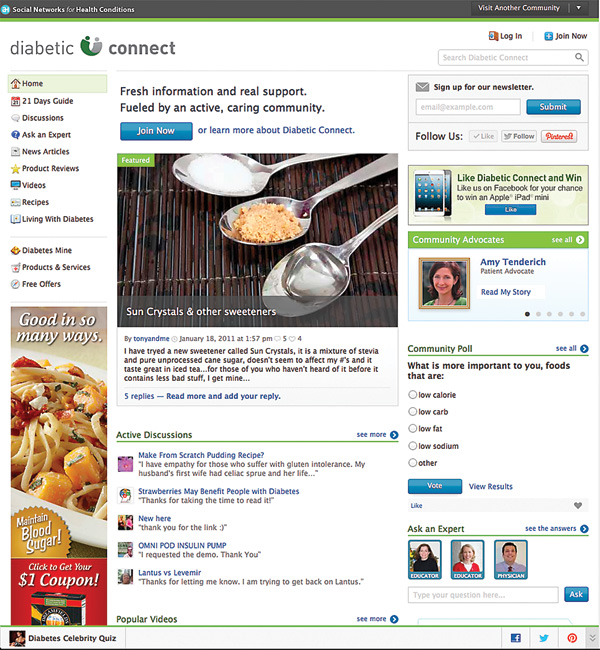A new generation of socially powered sites is making it possible for pharma to safely interact with patients online.
With complex emotional factors affecting an individual’s healthcare journey, it’s only natural to expect patients to turn to online communities for support. According to Manhattan Research, 109 million adults in the U.S. resort to some form of social media for health-related questions. Of those, 42% say that pharmaceutical companies should be involved in online health communities.
That should be welcome news to pharma marketers. But it’s not. With a few notable exceptions, pharma is gripped by fear when it comes to online communities that include user-generated content (UGC). The prevailing view holds that, absent clear guidance from the FDA, wading into those waters is a fool’s errand, particularly when the ROI is seemingly so elusive.
With this shift in consumer behavior, pharma marketers are naturally looking at ways to engage in social—and do so safely. The question remains, how? Without guidance from the FDA regarding the rules of engagement, marketers must be willing to embrace ambiguity and defer to their best judgment in brand placement decisions. That requires finding a social engagement platform that can provide a clear separation between the brand and unfiltered UGC.
Fortunately, that does not mean the end of social interaction entirely. Unlike Facebook or Twitter, a new generation of socially powered sites offers solutions specifically tailored to the needs of pharma. They offer the benefits of social engagement, but at the same time provide protection from UGC—“safe social” brand integration.
One example is Diabetic Connect, a socially powered site for people with diabetes. Within special sections that offer patients health management tools and educational content, brands can sponsor a multi-layered section that is hyper-focused to address a specific health concern.
The section includes articles, videos, tools and resources designed to help the patient through their health journey—all of which act as a gateway to social features and activity. Patients can comment, “like” and share assets seamlessly. They can interact and pose questions to patient advocates, experts and each other, all one click removed from any brand representation. Ad placements are 100% removed from any UGC.
The performance of these sponsorship opportunities proves that this approach to “safe social” is a win-win for both consumers and marketers. Engagement levels are two to three times that of static health content, and click-thru-rates (CTR), brand awareness and prescription lift far exceed all other digital tactics.
Another example: A safe social campaign for a COPD patient community yielded a 1.3% brand prescription lift (as measured by Crossix) resulting in a 3:1 ROI—with the added benefit of a 22% lift in brand awareness (as measured by a third-party survey of control vs. unexposed audiences).
The journey for “safe social” marketing solutions is just beginning. With more and more patients looking for support online, and brands looking to build deeper relationships with engaged patients, there are sure to be new and innovative ways to connect them. One thing is certain—social is no longer something pharma marketers should run from. The lure of high ROI can be met with a balanced approach to “safe social” integration.







